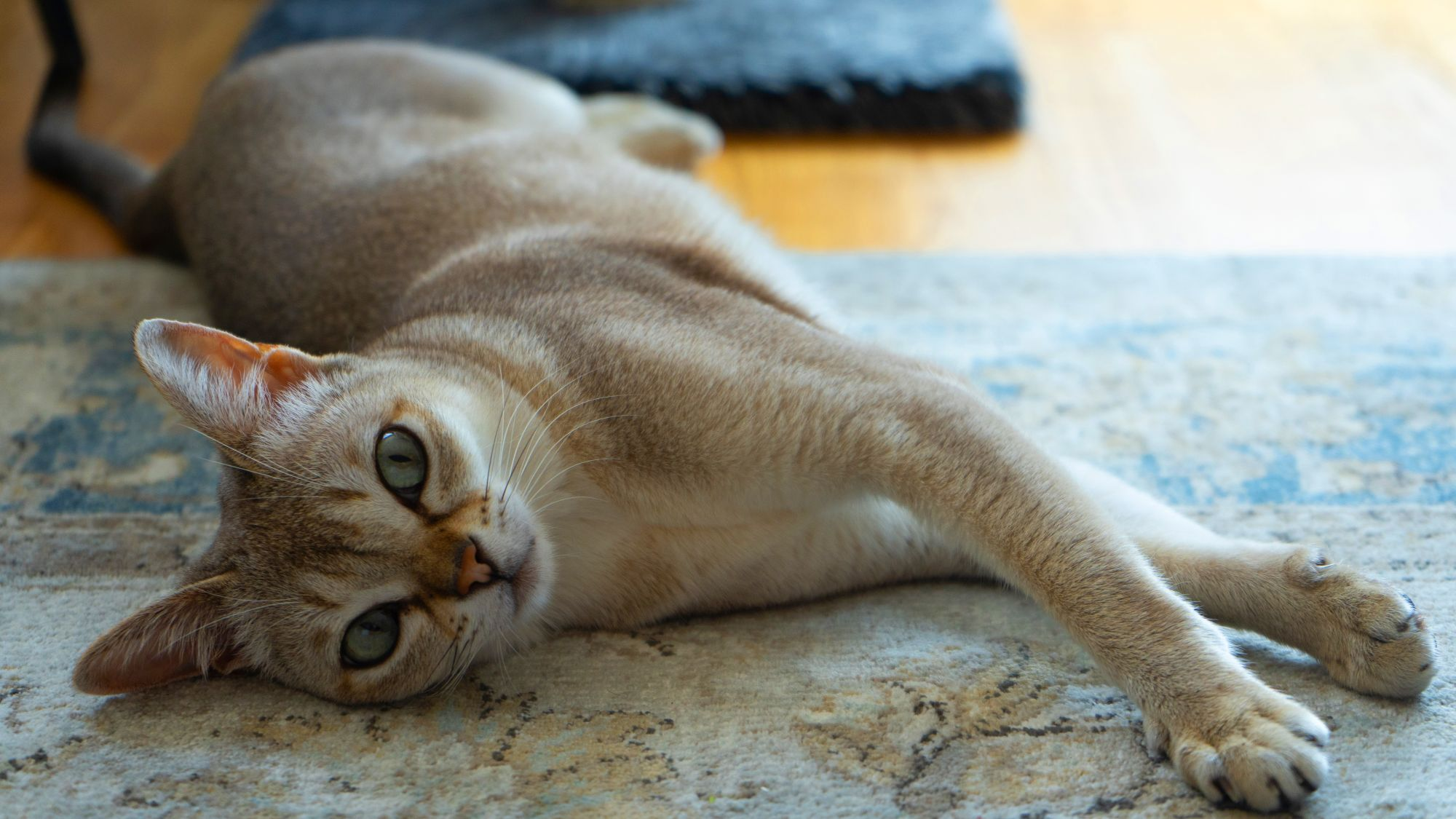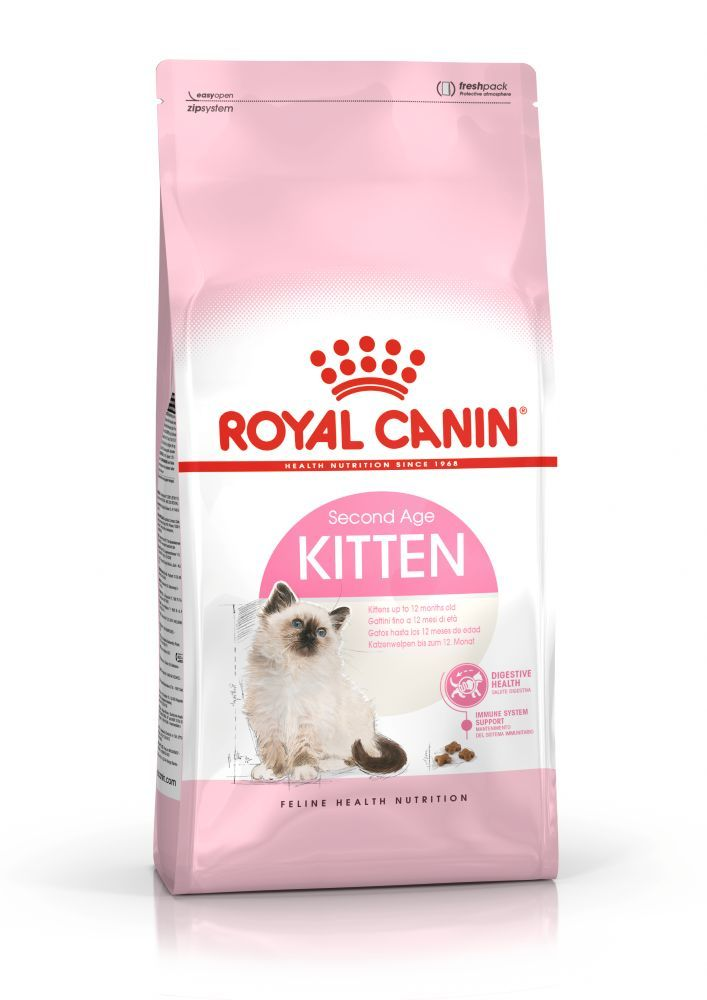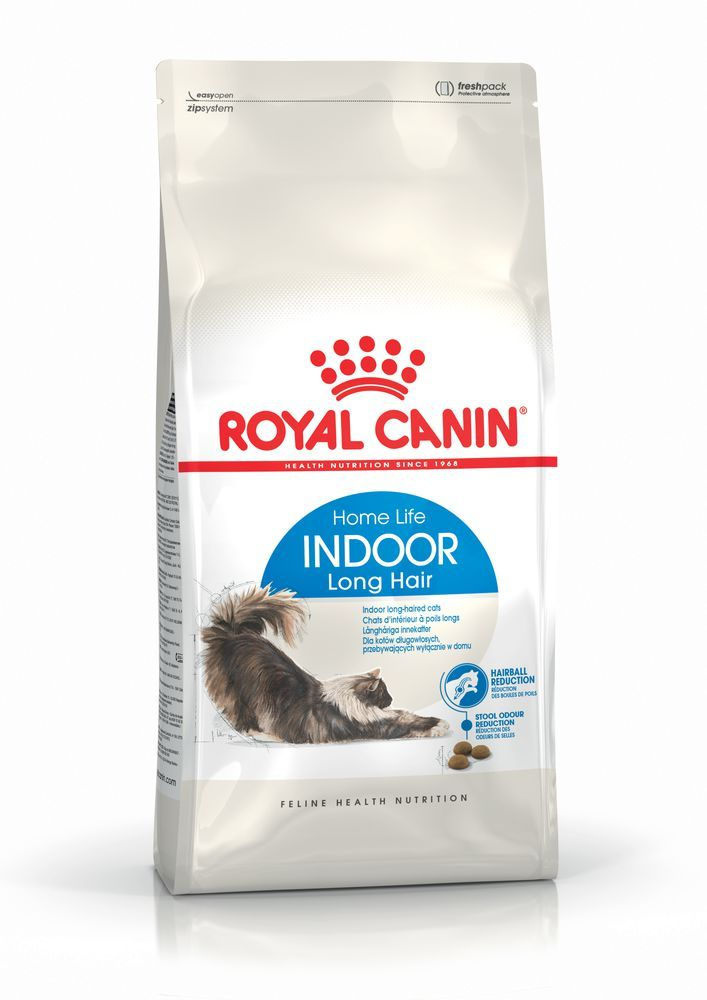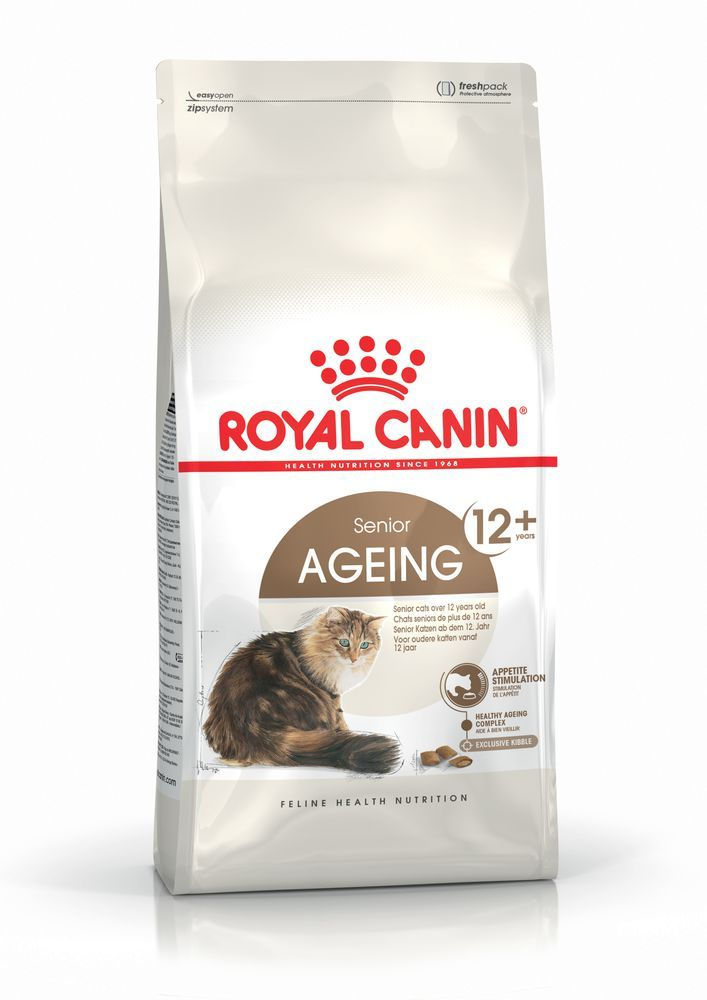Let's talk Singapura cats
Singapuras may be the world’s smallest cat breed but they have big ears, big eyes and above all, extra-large personalities. These tiny sepia-hued bundles of loveliness, originally from Singapore, have only been defined as a breed since the 1980s and remain fairly rare. But they are a big hit with those in the know – Singapura aficionados love them for their irresistible mix of playfulness, curiosity and affection – and all in an exquisite little package.
Official name: Singapura
Other names: None
Origins: Singapore
Nivel de muda de pelo:
{score 0 out of 5}Nivel de energía
{score 0 out of 5}Compatibilidad con otras mascotas
{score 0 out of 5}¿Clima cálido?
{score 0 out of 5}¿Mascota familiar? *
{score 0 out of 5}
| Male | Female |
|---|---|
| Height | Height |
| 15 - 20 | 15 - 20 |
| Weight | Weight |
| 2.75 - 3.75 | 2.25 - 2.75 |
| Kitten | Adult |
|---|---|
| 4 to 12 months | 1 to 7 years |
| Mature | Mature |
| 7 to 12 years | From 12 years |

Get to know the Singapura
All you need to know about the breed
The sepia-toned Singapura’s wide-eyed, big-eared appearance gives this little cat an air of curiosity. And once you get to know the breed you’ll find that first impression borne out by their personalities.
Playful and inquisitive, small but strong Singapuras are always on the go, whether it’s climbing, chasing, batting, exploring… if there’s fun to be had, they are there. The breed is just beautiful, with their elegant looks dramatically at odds with their humble origins – some Singapore strays or “drain cats” that were brought to America in the 1970s and formed the basis for the breed. They have short glossy coats in warm, creamy tones with darker brown “ticking” (two-toned hair) on their back, face and tail as well as huge, appealing almond-shaped eyes and oversized ears.
Singapuras are gregarious cats who prefer to be around their human families so they are best suited to homes where they won’t be left alone for extended periods. They get on well with other household pets and with children too.
Singapuras are certainly no shrinking violets – you might need to listen hard to hear their little miaow but they will certainly communicate with you.
2 facts about Singapura cats
1. National treasure
Singaporeans are so proud of the Singapura cat that the government has declared the breed a living national monument, while the tourist board chose the Singapura breed as its official mascot, with the name Kucinta, an amalgamation of ‘kucing’ (cat) and ‘cinta’ (love) in Malay. If you visit Singapore you’ll find a sculpture of a mother cat and her two kittens by the river.
2. Feline friends in high places
Singapura cats like a lofty perch—maybe they’re unconsciously paying homage to the skyline of their native land. Or maybe a high spot helps them better satisfy their natural curiosity, allowing them a cat’s-eye view of all the action. In any case, investing in a nice high cat tree or making sure they have a comfortable elevated spot from which to survey their homes will help keep these quirky little cats content.
History of the breed
The breed is said to owe its origins to a couple of American cat enthusiasts, Hal and Tommy Meadow, who brought some stray cats home with them from Singapore. The Singapura breed is even sometimes nicknamed “drain cat” after those lowly origins. Those first felines were the basis of a breeding programme started by the couple in the U.S., with other cats later imported by other cat breeders to add to the gene pool.
Cats with similar colouring are common in Southast Asia and the Singapura may be related to the Abyssinian, Burmese and Siamese breeds.
The Cat Fanciers’ Association recognised the breed in 1982, accepting it for championship competition in 1988.
From head to tail
Physical characteristics of Singapura cats
1.Body
2.Head
3.Coat
Things to look out for
From specific breed traits to a general health overview, here are some interesting facts about your Singapura
Risk of anaemia
Singapuras are generally healthy, but one problem that has recently been discovered in the breed is pyruvate kinase deficiency (or PKD for short), an inherited genetic disease caused by a deficiency of an enzyme which leads to a type of anaemia called hemolytic anaemia. The good news is that cats can be tested for the disease, but the only cure is a bone marrow transplant.
Weight-watching
When you’re as small as a Singapura cat, even a tiny amount of excess weight can cause problems, including by putting pressure on joints. Make sure your cat eats the right food in the correct portions to stay healthy. Regular check-ups with your vet will ensure that any problems are spotted and dealt with quickly.
Healthy diet, healthier cat

Tailored health nutrition has a fundamental role to play in maintaining the health and beauty of a cat. Food provides energy to help with vital functions and a complete nutritional formula for cats should contain an adapted balance of nutrients. Feeding them in this way will offer a diet that’s neither deficient or excessive, both of which could have adverse effects on your cat’s health.
Growth is an essential stage in a kitten’s life. It is a time of big changes, discoveries, and new encounters. When it comes to their energy, protein, minerals, and vitamin requirements, a kitten’s are much greater than those of an adult cat. They need energy and nutrients to maintain their body, but also to grow and build it. A kitten’s growth comes in two phases:
Construction - From Birth to 4 Months:
Weaning is the transition a kitten makes from liquid - or maternal milk - to solid food. This period naturally corresponds to the time when they cut their milk teeth, at 3 to 6 weeks old. At this stage kittens are not yet able to crunch, so a soft meal (rehydrated kibble or an adapted wet food) helps facilitate the transition between liquids and solids.
Between 4 and 12 weeks after birth, the natural immunity a kitten receives from the mother’s colostrum - or first milk - decreases while the kitten’s immune system gradually develops. This critical time, called the immunity gap, requires a complex of antioxidants, including vitamin E, to help support their natural defences.
Kittens go through an intense and particularly delicate period of growth during which they’re prone to digestive upset. Their diet at this time should not only be rich in energy to meet their essential growth needs but should also contain highly digestible protein for their digestive system that’s still maturing. Prebiotics, such as fructo-oligosaccharides, can also support their digestive health by helping to balance intestinal flora. The result? Good stool quality, all around.
The kitten’s food should contain omega 3 fatty acids - EPA-DHA - which helps support the proper neuro-cerebral development.
Consolidation and Harmonisation - From 4 Months to 12 Months:
From the fourth month, a kitten’s growth slows down, so a food lower in fats is recommended. This is particularly important after a cat is sterilised.
Between 4 and 7 months, a kitten’s milk teeth fall out and are replaced by permanent ones. When the adult teeth have come through, a kitten needs to eat kibble that’s big enough so they’re encouraged to crunch.
Until they’re 12 months old, an Abyssinian kittens’ immune system is still gradually developing. A complex of antioxidants, including vitamin E, can help support their natural defences during this time of big changes, discoveries, and new encounters.
Clean, fresh water should be available at all times to support good urinary regularity. Cats are also naturally adapted to eating small servings - between 7 and 10 times a day. Giving them the recommended ration of kibble once a day will let the cat regulate their own consumption; ironically, when they have only one or two servings a day, their weight increases more than a cat who eats on demand.
The digestive system matures progressively, with digestive aptitudes reaching full maturity toward twelve months of age. A cat is then able to consume adult food.
The following recommendations are for healthy animals. If your cat has health problems, please consult your veterinarian who will prescribe an exclusively veterinary diet.
When choosing food for Singapuras, there are factors to consider: their age; individual sensitivities; their lifestyle, which impacts their level of activity substantially; and their physiological status, such as sterilisation, a potential factor in weight gain. If the cat has outdoor access, the changing seasons also play a role, especially when it comes to moulting, which happens twice a year.
Age
Age is a factor in terms of a cat’s energy needs, especially in their early and the later years.
An 8-week-old kitten consumes three to four times more energy per kilo than an adult.
A cats’ appetite is reduced as they grow older due to dental sensitivities or a lessened perception of odours and flavours.
Growth Phase

When it comes to their nutrition, the goals for adult Singapuras are:
Contributing to maintaining an ideal body weight by using highly digestible ingredients and keeping the fat content at a sensible level*, especially for sterilised cats, indoor cats, and strays.
Supporting optimal digestion and balancing intestinal flora by using highly digestible proteins and prebiotics.
Preserving the health and beauty of the skin and coat with the addition of essential fatty acids, especially EPA-DHA, essential amino acids, and B vitamins.
Maintaining a healthy urinary tract system.
Adding fiber to stimulate the elimination of hair that’s ingested during grooming, thanks to selected fibers, in order to help reduce hairball formation.
Supporting daily oral care and hygiene.
Some cats can be fussy eaters so food palatability is key. Exclusive formula and aromas, kibble size, special texture, or a combination of different shapes or textures - with both their dry and their wet food - will help stimulate their appetite.
*Adjusting the energy level of the food to the energy needs of the cat encourages them to regulate their own consumption. Cats usually have more difficulty curbing their appetite if the kibble is very rich in fats.

After 7 years old, Singapuras start facing the first signs of ageing. A formula enriched with antioxidants will help maintain their vitality and an appropriate phosphorus content will support their renal system.
Healthy Nutrition for Outdoor Cats
Cats that are able to go outdoors spend more energy than those who stay inside. A food that’s more dense in energy is therefore recommended. Increasing the volume of food with a low energy density, such as an indoor cat formula, isn’t a solution for feeding outdoor cats as it can lead to a decrease of the digestive efficiency.
Nutrients that specifically support healthy joints can benefit a very active outdoor cat.
Select nutrients and antioxidants can bolster the skin barrier to help outdoor cats cope better. Just being outside leaves them open to possibly receiving a small wound or exposing them to harmful bodies, like external parasites.
Ageing also means modified digestive capacity. A senior cat - one over the age of 12 - may sometimes have difficulties with absorption, too. To maintain the weight of the ageing cat and prevent any risk of deficiency, they should be given an extremely digestible food filled with essential nutrients.
As they get older, cats increasingly suffer from teeth problems, and in some senior cats, the sense of taste and smell may decline as well, which can lead to a lowered intake of food. To ensure they continue to eat enough, the shape, size, and hardness - meaning texture - of their kibble needs to be tailored to their now potentially more fragile jaw.
Note that the best energy level for any cat still depends on their lifestyle, even those who are ageing. A senior cat that continues to go out regularly will benefit from a diet with a slightly higher fat content. On the other hand, ageing does not reduce an indoor cat’s risk of obesity. Their calorie intake should still be closely monitored. A food with a moderate fat content then may be optimal.
Lifestyle
The energy density of the food should be different for indoors and outdoor cats. Going outside changes a cat’s nutritional as well as their energy needs, the latter of which increase according to the amount of time they spend outdoors, their territory, and the degree to which the climate changes through the year (many outdoor cats become indoor cats during the winter). While a 4kg cat needs around 300 kcal/day if it’s outdoors, the same cat who stays inside won’t expend more than 200 kcal/day - a full third less. What’s more, a sedentary cat that is fed a high-fat, high-energy diet as often as they like is less able to regulate its consumption.
Healthy Nutrition for Indoor Cats
Because an indoor lifestyle often means less exercise (an indoor cat expends a third less than one living outdoors), an adjusted calorie content which meets those reduced energy needs and a diet containing L-carnitine to help promote fat metabolism can help maintain an ideal weight. Avoid feeding them human foods or fatty snacks; instead, reward them with kibble taken out of their daily meals, and strictly follow the feeding guidelines written on the pack to prevent them from gaining weight.
Indoor cats spend more time grooming themselves. Selected fibres, such as psyllium, can help to eliminate the hair they’ve ingested, which will reduce hairballs.
For Singapura cats living mostly indoors, eating highly digestible proteins will help reduce both the amount of stool and its smell.
Caring for your Singapura
Grooming, training and exercise tips
With their neat smooth coats, Singapura cats don’t need much grooming—just a once-a-week brush through will be plenty. Like other cat breeds their teeth need to be cleaned – daily if possible, otherwise weekly – and their nails trimmed every couple of weeks. Those lovely big ears also need some attention—check them for dirt once a week and wipe them out if necessary with a soft damp cloth.
Sprightly Singapuras may only have little legs but they can cover a lot of ground as they zip energetically about the place, performing turbo-charged leaps and scrambling up anything that gets in their way. A good-sized cat tree will provide the perfect vantage point for them to observe their humans and they also need a scratching post to allow them to fulfil their natural urge to, well, scratch. As these pint-sized felines are intelligent and in need of plenty of mental stimulation, teaching them tricks or playing games such as fetch (not just for dogs!) with them is a good idea.
7/7
All about Singapura
Yes – the Singapura is considered to be a rare breed. As it is a natural breed, kittens need to have two Singapura parents to be designated as one of the clan, and litters are normally only made up of 2-3 kittens.
A resounding yes – with their gorgeous looks and twinkly, affectionate personalities, Singapura cats are a joy to have around the home. They get on well with everyone and their enthusiasm and energy will be infectious!
Suggested Breeds
Read more on this topic
- Veterinary Centers of America https://vcahospitals.com/;
- Royal Canin Cat Encyclopaedia. Ed 2010 and 2020
- Banfield Pet Hospital https://www.banfield.com/
- Royal Canin BHN Product Book
Like & share this page